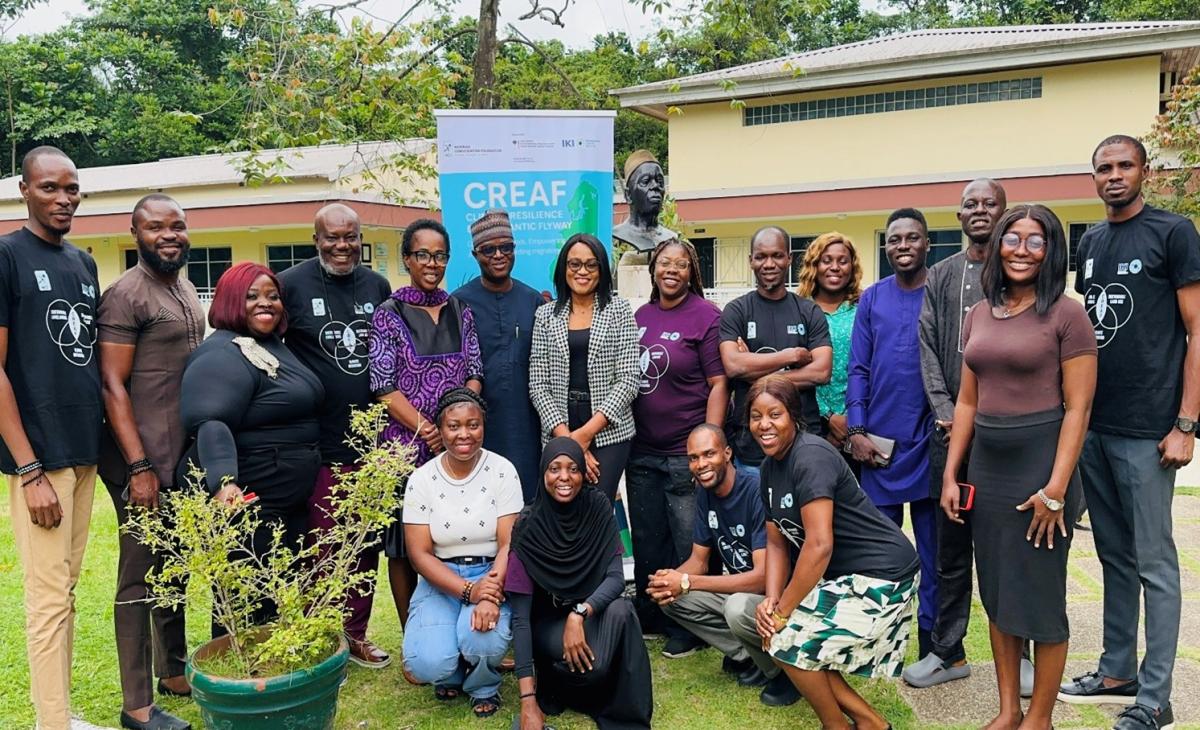NCF Strengthens Media Capacity to Report on Climate and Bird Conservation

Empowering journalists to spotlight the climate–bird–people connection across Nigeria’s wetlands
As part of the CREAF project (Climate Resilience East Atlantic Flyway), the Nigerian Conservation Foundation (NCF) hosted a two-day training workshop for journalists on 16–17 July in Lagos.
The workshop aimed to enhance environmental reporting on climate change, biodiversity loss, and wetland conservation, placing migratory birds and the communities that share their habitats at the heart of the story.
Funded by the International Climate Initiative (IKI), the training was organized by NCF as part of its ongoing work under the CREAF project, with Dr. Stella Egbe providing thematic leadership and facilitating key sessions in her role as Senior Conservation Manager, Species Programmes.
The sessions underscored how birds and people rely on the same wetland ecosystems for food, shelter, and survival, and how protecting these shared spaces is both a conservation and community imperative.
Through expert presentations, interactive exercises, and a guided field visit to the Lekki Conservation Centre, participants strengthened their capacity to tell fact-based, human-centered stories grounded in science and local realities.
“Journalists have the power to bridge science and society,” said Dr. Joseph Onoja, Director General of NCF. “By telling the story of birds, wetlands, and climate impacts, they help the public and policymakers understand what’s at stake and what can still be saved.”
The workshop featured sessions by Mrs. Esther Omopariola, a seasoned environmental journalist, and Mr. Kunle Olawoyin, a development communication specialist, with strategic support from Mr. Somi Oduguwa, who leads NCF’s communication efforts.
“Environmental journalism isn’t just about crises, it’s about uncovering solutions,” said Mrs. Omopariola. “When journalists tell stories about birds, wetlands, and local resilience, they help communities see themselves in the climate conversation and that’s where real change begins.”
“Good stories are about people, not just issues,” added Mr. Olawoyin, emphasizing the need to humanize conservation coverage. “We must highlight resilience and survival, not just struggle, so audiences can connect and care.”
A storytelling challenge and field reporting session helped journalists apply their learning in real time. A post-training assessment showed:
- 90% increase in understanding of bird conservation and flyway dynamics
- Stronger confidence in covering climate and wetland-related topics
- Greater awareness of nature-based solutions and community resilience efforts
The workshop concluded with discussions on collaborative journalism, environmental grant opportunities, and the need to elevate conservation reporting in mainstream media.
This initiative marks a key step in strengthening Nigeria’s media landscape supporting journalists to communicate the urgent links between climate, birds, and people, and to inspire informed action to protect the wetlands they all depend on.
